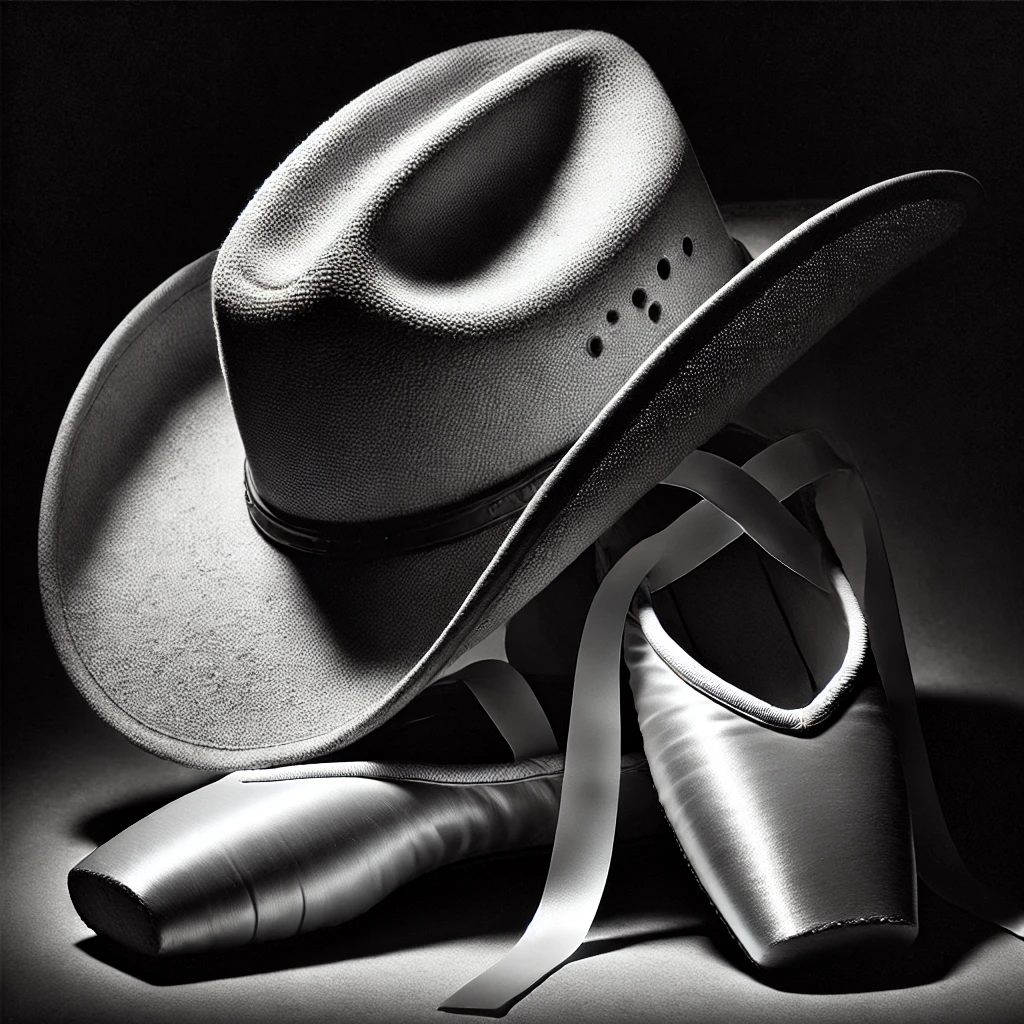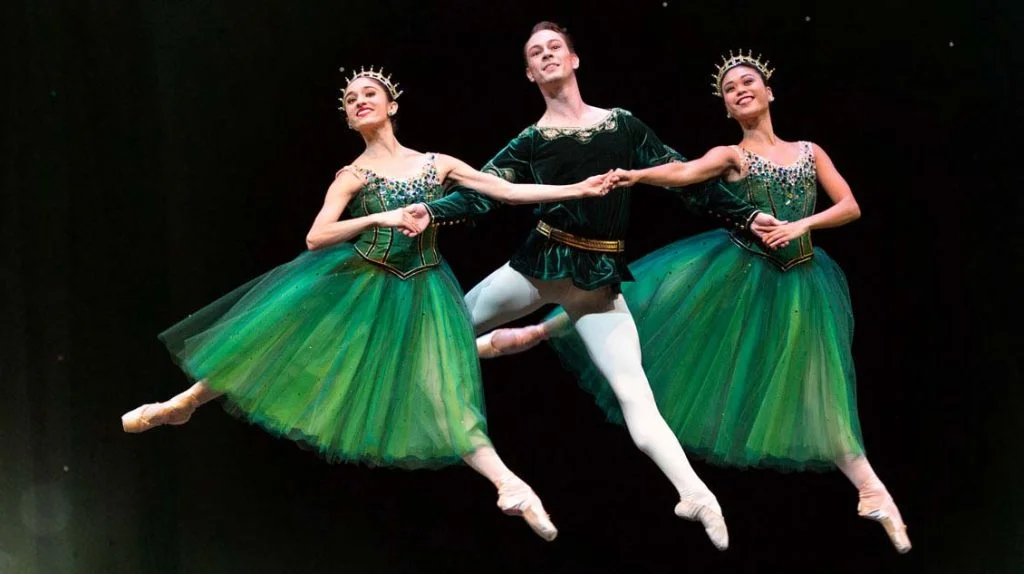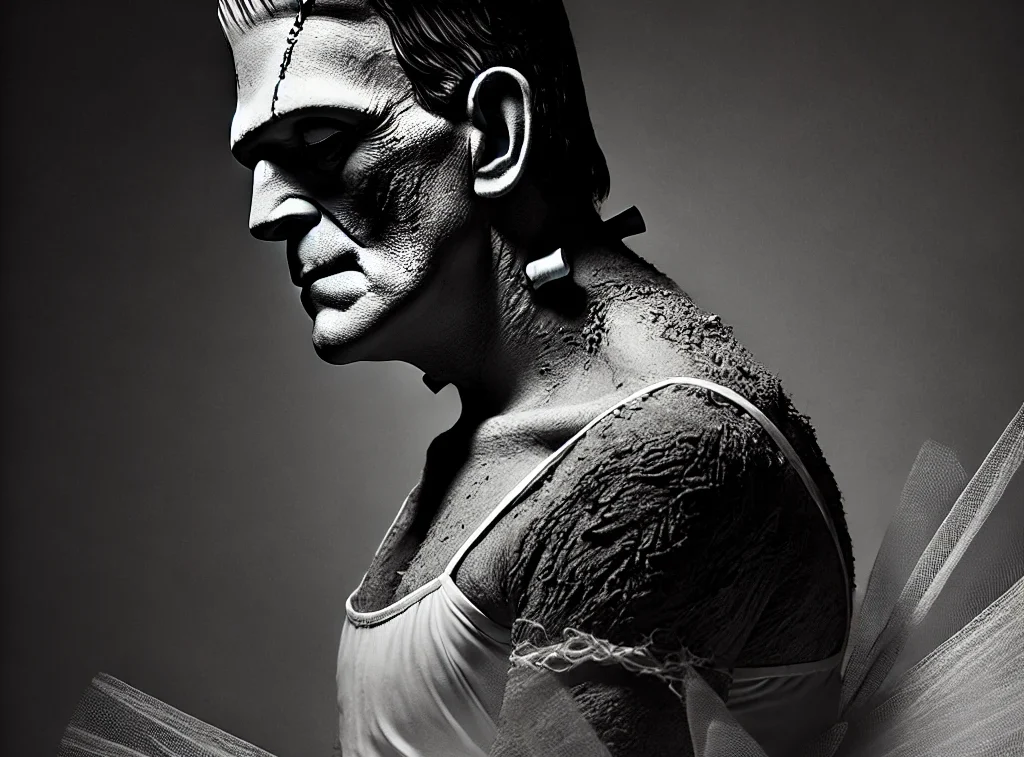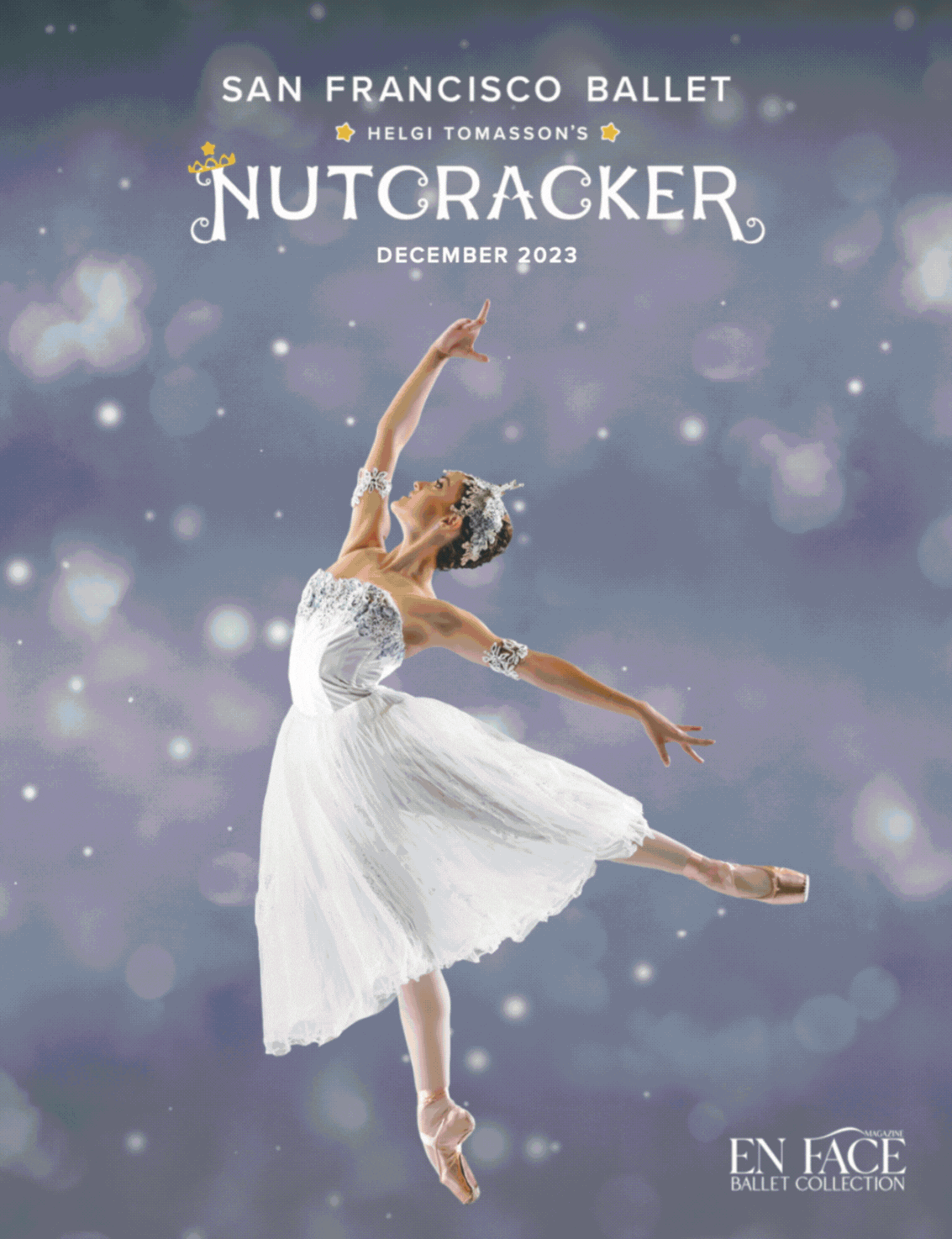
Choreographer: George Balanchine
Composer: Hershy Kay (arrangements of American folk songs and traditional Western tunes)
Premiere: September 7, 1954, at New York City Ballet
Overview: Western Symphony is a lively, playful ballet that blends classical ballet technique with the vibrant spirit of the American West. Set to a score of traditional Western folk tunes arranged by Hershy Kay, the ballet brings cowboys, dancehall girls, and the energy of the frontier to life. Balanchine’s clever integration of Western dance motifs and ballet creates a dynamic performance that captures the humor and charm of the Old West.
Key Themes:
- Fusion of Classical Ballet and Americana: Balanchine blends classical ballet movements with Western dance elements like square dance patterns, kicks, and folk gestures to create a unique fusion of styles.
- Playfulness and Humor: The ballet has a lighthearted tone, with exaggerated gestures, flirtatious interactions, and humorous exchanges between the dancers that add a sense of fun and whimsy.
- Energetic, Dynamic Choreography: Western Symphony is filled with lively, high-energy choreography that reflects the adventurous spirit of the frontier. From large ensemble pieces to virtuosic solos, the ballet maintains a spirited pace throughout.
Notable Sections:
- First Movement (Allegro): The ballet opens with a lively introduction as cowboys and dancehall girls enter the stage. This movement is fast-paced and playful, filled with jumps, kicks, and flirtatious exchanges between the characters.
- Second Movement (Adagio): A slower, more lyrical section, where a cowboy and his dancehall girl partner engage in a graceful duet. Their movements are smooth and flowing, showcasing the softer, romantic side of the Western theme.
- Third Movement (Rondo): The final movement brings the full ensemble back together in a high-energy, celebratory finale. The dancers perform with exuberance, reflecting the joy and spirit of the frontier with large jumps, quick turns, and a sense of competition between the dancers.
What to Watch For:
- Character Expression: Notice how the dancers embody the swagger of cowboys and the charm of dancehall girls, even while performing technically demanding ballet movements. The playful and exaggerated expressions are a key element of the ballet’s humor and energy.
- Western Meets Ballet: Watch for the clever incorporation of Western dance motifs into classical ballet, especially in the group sections where square dance patterns, high kicks, and folk dance steps blend seamlessly with traditional ballet technique.
- Dynamic Partnering: In the duets, pay attention to the interactions between the cowboys and their partners. The playful competition and flirtation between the dancers add a fun, lively dynamic to the movement.
- Corps de Ballet Precision: The ensemble’s tight formations and synchronized movements reflect the precision of both classical ballet and Western folk dance, creating visually stunning moments where the entire corps moves as one.
- Humor in Choreography: Balanchine’s use of humor comes through in the dancers’s exaggerated gestures, unexpected movements, and playful interactions, making the ballet not only technically impressive but also delightfully entertaining.
Here’s the lift: “Balanchine’s Western Symphony is a joyous and energetic celebration of American folk culture, filled with humor, charm, and virtuosic ballet technique. The playful interactions between the characters, the inventive choreography that merges classical ballet with Western motifs, and the high-energy ensemble work make this ballet a delightful and entertaining experience. Audiences should watch for the seamless blending of Western and ballet styles and enjoy the lively spirit that permeates the performance.” MIsty Tompoles










